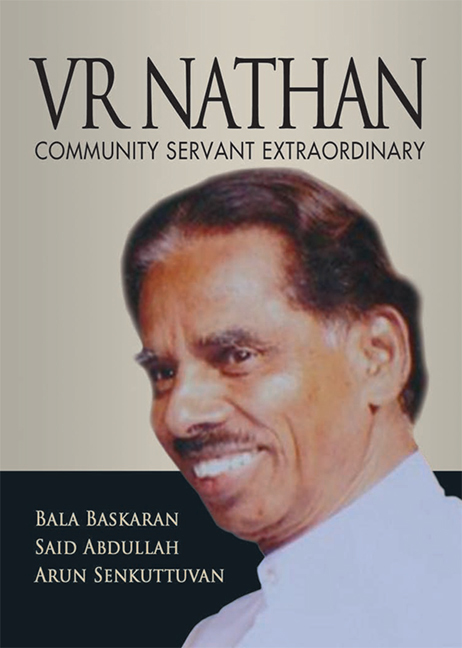Book contents
- Frontmatter
- Contents
- Foreword
- Message
- Preface
- Acknowledgements
- 1 VR's Inter-religious Leadership
- 2 An Immigrant who Made Good
- 3 Introduction to Temple Management Affairs
- 4 Invitation to Help out HEB
- 5 An Era of Change in HEB
- 6 VR's Signal Contribution to HEB's Transformation
- 7 Celebrating Hindu Festivals
- 8 Transforming the Temple Scene
- 9 VR's Views in Public Deliberations of Issues Affecting Indians
- 10 VR's Legacy
- Appendix
- About the Authors
- Plate section
5 - An Era of Change in HEB
Published online by Cambridge University Press: 21 October 2015
- Frontmatter
- Contents
- Foreword
- Message
- Preface
- Acknowledgements
- 1 VR's Inter-religious Leadership
- 2 An Immigrant who Made Good
- 3 Introduction to Temple Management Affairs
- 4 Invitation to Help out HEB
- 5 An Era of Change in HEB
- 6 VR's Signal Contribution to HEB's Transformation
- 7 Celebrating Hindu Festivals
- 8 Transforming the Temple Scene
- 9 VR's Views in Public Deliberations of Issues Affecting Indians
- 10 VR's Legacy
- Appendix
- About the Authors
- Plate section
Summary
A brief survey of the early history will help in getting a better understanding of why SR had to make the approach to VR.
British masters ruling old India decided that two religious groups – the Hindus and Muslims – needed to be managed by colonial servants or those faithful to the crown while those professing other religions could be left to manage their own affairs. When the empire extended to Southeast Asia, the colonial administrators adopted the same approach – in slightly different forms in different territories. In Singapore, which was first ruled from Calcutta, the method was very similar to that in India. The manner in which some of the Hindu temples were brought under the control of such a board was also similar. The backdrop of social divisions along caste and trade lines among devotees and functionaries that led to some of the tensions in these temples was also similar. A brief survey of the early history will also help to acquire a better understanding of why SR had to make a few decisions “which looked authoritarian to some” (SR's words) but were necessary and how VR implemented them efficiently.
Some of the problems that HEB under SR's leadership inherited were quite old and not just confined to the four HEB temples. The second oldest of the challenges was perhaps the need to sensitively (without hurting the feelings of devotees) and satisfactorily (from the viewpoint of the authorities) manage the Hindu festivals like Thaipusam and fire-walking that spilt out into the public domain and out of the temple surroundings. Different temples celebrated Thaipusam in a slightly different manner from the way they celebrated it in Palani, Tamil Nadu, one of the six holy places dedicated to Thandayuthapani or Murugan. In Singapore, the Chettiars took out their urchavar (metal god-form that is meant to be mobile on special occasions) in a chariot procession through the city on Punarpusam, the day before Thaipusam. The procession will start at sunset and, with the help of torches, wind its way through those streets of the business district where Hindus had shops or warehouses and return to Thandayuthapani Temple in Tank Road. In the early days, there would be quite a few oiled torches to light the way as street lighting was poor. Also in the early years, the route included Beach Road.
- Type
- Chapter
- Information
- VR NathanCommunity Servant Extraordinary, pp. 35 - 44Publisher: ISEAS–Yusof Ishak InstitutePrint publication year: 2012



